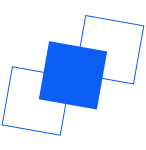Explore IIHTG Content
Our Course Content
- Overview of computer networks
- Importance of networking in modern computing
- Types of networks: LAN, WAN, MAN, PAN
- Network topologies: star, bus, ring, mesh
- OSI model: layers and functions
- TCP/IP model: layers and protocols
- Comparing OSI and TCP/IP models
- Network devices and their roles (routers, switches, hubs, access points)
- Understanding protocols and standards
- Common networking protocols: TCP, UDP, IP, HTTP, FTP, DNS, DHCP
- Role of protocols in communication
- Encapsulation and packet structures
Installation and Configuration: Setting up RHEL systems and managing software. Command Line: Proficiency in using the command line for administrative tasks. User and Group Management: Creating and managing user accounts and groups. File Systems: Managing file systems and storage, including mounting and unmounting file systems. Security: Implementing security measures, such as firewalls and SELinux. Networking: Configuring network settings and troubleshooting networking issues. Troubleshooting: Diagnosing and resolving common system issues.
- Windows Server: Knowledge of server installation, configuration, and management.
- Windows Operating Systems: Understanding of Windows client operating systems and their management.
- SQL Server: Skills in database development, administration, and business intelligence.
- Office 365: Expertise in cloud-based productivity solutions and collaboration tools.
- Azure: Understanding of Microsoft Azure services and cloud computing concepts.
- Importance of network security
- Common threats: malware, phishing, DDoS attacks
- Security protocols: SSL/TLS, IPSec
- Firewalls: types and configurations
- Network security best practices
- Introduction to wireless networks
- Wireless standards (IEEE 802.11)
- Wi-Fi security protocols (WPA, WPA2, WPA3)
- Configuring and troubleshooting wireless networks
- Understanding routing and switching concepts
- Static vs. dynamic routing
- Routing protocols (RIP, OSPF, BGP)
- VLANs: creating and managing virtual LANs
- Layer 2 vs. Layer 3 switches
- Principles of network design
- Designing a scalable network architecture
- Implementing network infrastructure
- Best practices for documentation and maintenance
- Introduction to cloud computing and networking
- Virtual networks in cloud environments
- Security considerations for cloud networking
- Networking services in major cloud providers (AWS, Azure, Google Cloud)
Enquire Now
Things You Enjoy
- Accredited Training Partner
- Certified Training Partner
- Diversified Training Modules
- Tailored Courses
- Round-the-Clock Learning Access
- Weekly Assessment
- Placement Facilitation





















